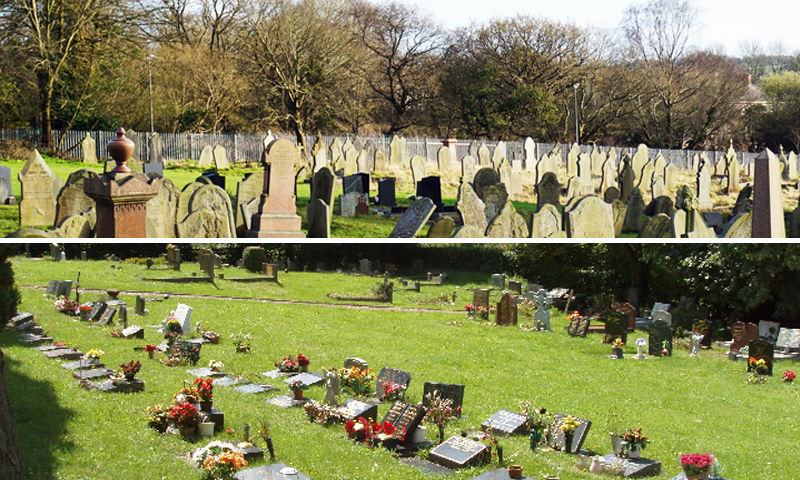
Burials and cremations
In the Christian era, churchyards became the place to bury the dead, with proceedings conducted by the vicar and expectations being that at some future point the bodies would be resurrected. These grounds are now quite full but the gravestones provide an interesting historical record. The Burial Act of 1858 allowed local authorities to buy suitable pieces of land on which to build funeral facilities and landscape new areas for burials. The largest in the UK is Brookwood Cemetery in Surrey, which, with its own railway station, originally served as the final resting-place for Londoners.
With an increasing population amidst the Industrial Revolution, forward-thinking Sir Henry Thompson (1820-1904) from Suffolk wrote a paper in 1874 explaining the advantages of re-introducing cremation, a shocking idea back then. He said that it would be cheaper, it would eliminate all remnants of disease and both the service and disposal could be carried out indoors!
The first cremation thereafter was of Jeanette Pickersgill (1813-85) at Woking Crematorium, close to Brookwood. Post-WW2 there was a big jump in numbers and today around 80% of bodies are cremated in the country’s 322 crematoria. Ashes are either buried or scattered in a peaceful or significant location, with council permission if on public land.
(Images top to bottom: church graveyard by Bill Boaden & buried cremation urns by David Hawgood, both at geograph.org.uk / CC BY-SA 2.0)
